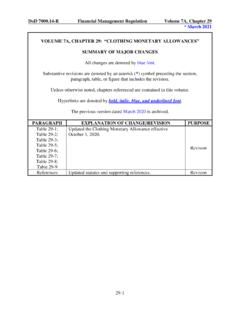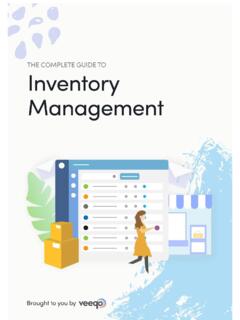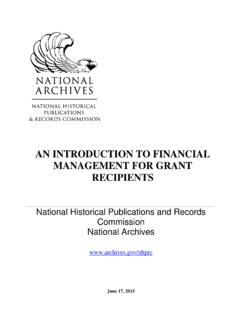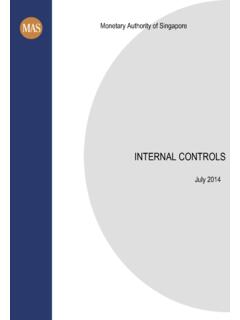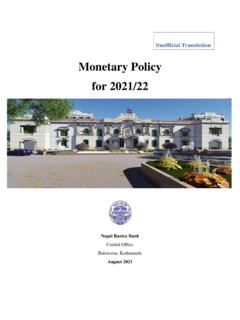Transcription of Inventory Management Hazardous Material Management …
1 UNCLASSIFIED Department of the Army Pamphlet 710 7 Inventory Management Hazardous Material Management Program Headquarters Department of the Army Washington, DC 23 March 2017 SUMMARY of CHANGE DA PAM 710 7 Hazardous Material Management Program This regulation is certified current as of 23 March 2017. Aside from the following administrative changes, no other changes were made to certify the currency of this regulation o Updates the Department of the Army signature authority (title page). o Changes DALO SUF to DALO SPS (title page). o Deletes the title, Interim changes (title page). *This publication supersedes DA Pam 710 7, dated 31 July 2007. DA PAM 710 7 23 March 2017 UNCLASSIFIED i Headquarters Department of the Army Washington, DC *Department of the Army Pamphlet 710 7 23 March 2017 Inventory Management Hazardous Material Management Program History. This regulation was certified current on 23 March 2017.
2 Aside from up-dating the Department of the Army signa-ture authority (title page), changing DALO SUF to DALO SPS (title page), and deleting the title Interim Changes (ti-tle page), no other changes were made to certify the currency of this regulation. No content has been changed. Summary. The Hazardous Material man-agement program is established to provide standard Army practices for the centralized control and Management of Hazardous ma-terial. Applicability. This pamphlet applies to the Active Army, the Army National Guard/Army National Guard of the United States, and the Army Reserve, unless otherwise stated. Proponent and exception authority. The proponent of this pamphlet is the Dep-uty Chief of Staff, G 4. The proponent has the authority to approve exceptions or waivers to this pamphlet that are consistent with controlling law and regulations.
3 The proponent may delegate this authority, in writing, to a division chief within the pro-ponent agency in the grade of colonel or the civilian equivalent. Activities may request a waiver to this pamphlet by providing jus-tification that includes a full analysis of the expected benefits and must include formal review by the activity s senior legal officer. All waiver requests will be endorsed by the commander or senior leader of the request-ing activity and forwarded through higher headquarters to the policy proponent. Refer to AR 25 30 for specific guidance. Suggested improvements. Users are invited to send comments and suggested improvements on DA Form 2028 (Recom-mended Changes to Publications and Blank Forms) directly to the Deputy Chief of Staff, G 4 (DALO SPS), 500 Army Penta-gon, Washington, DC 20310 0500. Distribution. This publication is availa-ble in electronic media only and is intended for command levels C, D, and E for the Ac-tive Army, the Army National Guard/Army National Guard of the United States, and the Army Reserve.
4 Contents (Listed by paragraph and page number) Chapter 1 General, page 1 Purpose 1 1, page 1 References 1 2, page 1 Explanation of abbreviations and terms 1 3, page 1 Background 1 4, page 1 Current situation 1 5, page 1 Objective 1 6, page 2 Scope 1 7, page 2 Chapter 2 Procedures, page 3 General 2 1, page 3 Scaling the installation program 2 2, page 3 Business practices 2 3, page 3 Business practices and implementation guidance 2 4, page 4 Contents Continued ii DA PAM 710 7 23 March 2017 Appendixes A. References, page 10 B. Sample Garrison Committee Charter, page 12 C. Sample Garrison Policy Statement and Guidance, page 15 D. Sample Hazardous Material Management Internal Standard Operating Procedures, page 21 E. Sample External Hazardous Material Control Point Standard Operating Procedure, page 27 Table List Table D 1: Hazardous materials authorizations and/or additions , page 23 Table D 2: Request for Hazardous Material , page 24 Table D 3: Hazardous Material receipt actions, page 25 Table D 4: Hazardous Material issue procedures, page 26 Table D 5: Hazardous Material disposition procedures, page 26 Figure List Figure D 1: Fort Someplace Directorate of Logistics Hazardous Materiel Program operational concept, page 22 Figure E 1: Hazardous Material issue and return flow, page 28 Figure E 2: Hazardous Material return and disposition procedures, page 30 Figure E 3: Additions, deletions, or changes to an authorized user list, page 32 Glossary DA PAM 710 7 23 March 2017 1 Chapter 1 General 1 1.
5 Purpose This pamphlet implements a standard to commanders and staff for the Armywide Hazardous Material Management Pro-gram (HMMP). The purpose of the HMMP is to integrate accountability for Hazardous Material (HM) into day-to-day decisionmaking, planning, operations, and compliance across all Army missions, activities, and functions on the installa-tion (garrison, depot, State Area Command, or Joint Force Headquarters or in regional clusters of installations). This pam-phlet expands on the HMMP policy contained in AR 710 2, providing guidance for establishing standard, centralized Management business practices that can be tailored to account for different size installations with varied operational mis-sions. Army commands with responsibility for installations can also provide guidance for phased implementation of HMMPs to coincide with the availability of automated Management applications and funding.
6 1 2. References See appendix A. 1 3. Explanation of abbreviations and terms See glossary. 1 4. Background a. The Deputy Chief of Staff, G 4 and the Assistant Chief of Staff for Installation Management initiated the Army HMMP, recognizing that integrating environmental principles into logistics mission operations creates the opportunity for achieving efficiencies and economies in addition to meeting compliance requirements. b. It was anticipated that installations implementing HMMP to the extent possible would find that the HMMP (1) Helps the commander protect human health and the environment through enhanced compliance with existing laws and regulations. (2) Generates savings through reduced HM usage, eliminates duplicate tracking and information systems, and mini-mizes the use of protective clothing and equipment and special procedures required for HM and/or Hazardous waste (HW) exposure.
7 (3) Supports meeting the tasks imposed by Executive Order (EO) 13423. (4) Aids in meeting regulatory requirements for overseas operations covered by host nation agreements or final gov-erning standards (FGS). (5) Contributes to safe handling of HM and reduces the potential for notices of violations and the monetary fines asso-ciated with them. (6) Provides data showing the status and location of HM to all installation organizations requiring that information. (7) Realizes cost avoidance or savings in both the procurement of Hazardous materials and the disposal of Hazardous and solid wastes. (8) Addresses inherent problems with shelf-life expirations, environmental and occupational health, and safety risks, safe storage requirements, security, disposal and liability costs, and tracking and reporting requirements. 1 5. Current situation a. Army installations are procuring significant quantities of HM and generating large amounts of HW.
8 Past and current business practices often result in purchasing more HM than is needed for near-term requirements, which in turn results in excess quantities of Material being disposed of for expired shelf-life or deteriorated containers. HW generation contributes to landfill problems and results in additional disposal costs. Consistent with EOs, emerging Department of Defense (DOD) and Army sustainability guidance documents mandate improved HM and/or HW control and establish mandatory reduction goals. b. New and emerging legislation, EOs, and code of federal regulations (CFR) have increased installation reporting requirements. Similarly, emerging FGS have increased controls on forward-stationed Army units. These requirements impact current accepted operational and logistic missions. c. HMMPs currently exist at many installations and overseas organizations. Previous Army guidance suggested the adoption of eight business practices and the use of the Hazardous Substance Management System software, but it did not make this approach mandatory.
9 A review of installation HMMPs revealed that operational concepts, business practices, and data conventions varied widely. There were no Army metrics to measure the success of the program or to generate 2 DA PAM 710 7 23 March 2017 required standard data. Individual installations achieved varying levels of success. Furthermore, the lack of standardization limited successes in implementing supply chain integration and sustainability goals and/or objectives. Soldiers transferring between installations had to be retrained on different local procedures. 1 6. Objective The core objective is to improve logistics and operational mission performance by controlling and reducing the acquisition, use, handling, and disposal of HM and the generation of HW, consistent with Army supply chain integration and sustain-ability objectives. To support this primary objective, the Deputy Chief of Staff, G 4 intends to integrate HMMP procedures into the Single Army Logistics Enterprise to eliminate stovepipe automation systems and dual data entry.
10 1 7. Scope a. This document is applicable both in the continental United States and outside the continental United States (OCONUS). In continental United States, these procedures address the centralized Management and visibility of HM at installations, depots, and regional clusters of installations. OCONUS, they apply to tactical support activities providing HM Management services for forward-stationed units and military communities. The procedures are intended to assist OCONUS Army units and facilities in meeting operational requirements and the terms of FGS established in cooperation with host nations. b. To reduce or eliminate harm to human health and the environment from the use of HM and releases of pollutants to the environment, HMMP policy and procedures attempt to reduce risks and pollution at the source. Sound mission, envi-ronmental, and industrial health Management practices include the review of processes to identify the use of Hazardous materials.












